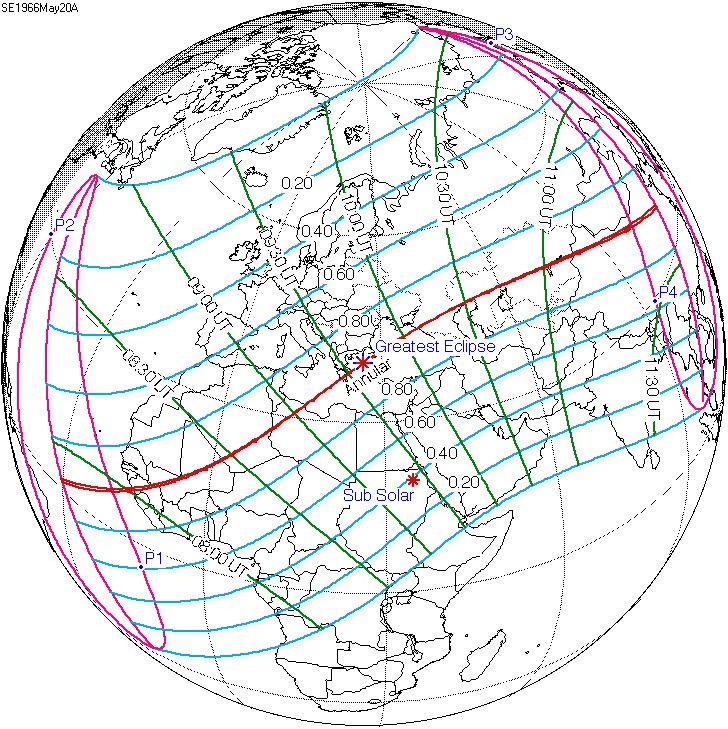Nature Annular Magnitude 0.9991 Max. width of band 3 km (1.9 mi) Start date May 20, 1966 | Gamma 0.3467 Duration 5 sec (0 m 5 s) Greatest eclipse 9:39:02 | |
 | ||
An annular solar eclipse occurred on May 20, 1966. A solar eclipse occurs when the Moon passes between Earth and the Sun, thereby totally or partly obscuring the image of the Sun for a viewer on Earth. An annular solar eclipse occurs when the Moon's apparent diameter is smaller than the Sun's, blocking most of the Sun's light and causing the Sun to look like an annulus (ring). An annular eclipse appears as a partial eclipse over a region of the Earth thousands of kilometres wide.
Contents
Solar eclipses of 1964-1967
Each member in a semester series of solar eclipses repeats approximately every 177 days and 4 hours (a semester) at alternating nodes of the Moon's orbit.
Note: Partial solar eclipses on January 14, 1964 and July 9, 1964 belong to the previous lunar year set.
Metonic series
The metonic series repeats eclipses every 19 years (6939.69 days), lasting about 5 cycles. Eclipses occur in nearly the same calendar date. In addition the octon subseries repeats 1/5 of that or every 3.8 years (1387.94 days).
